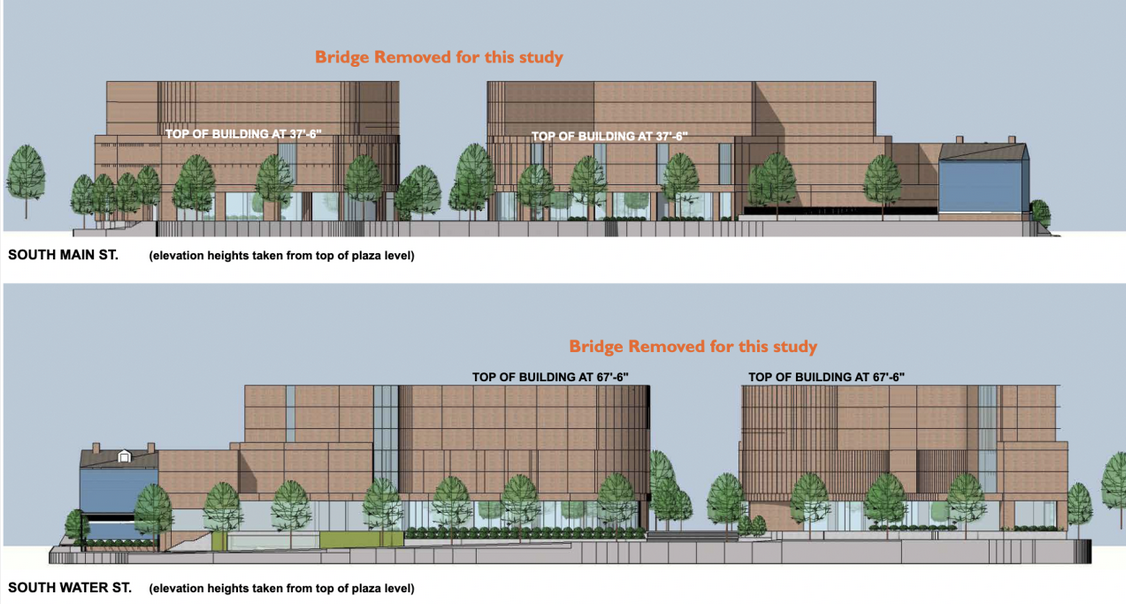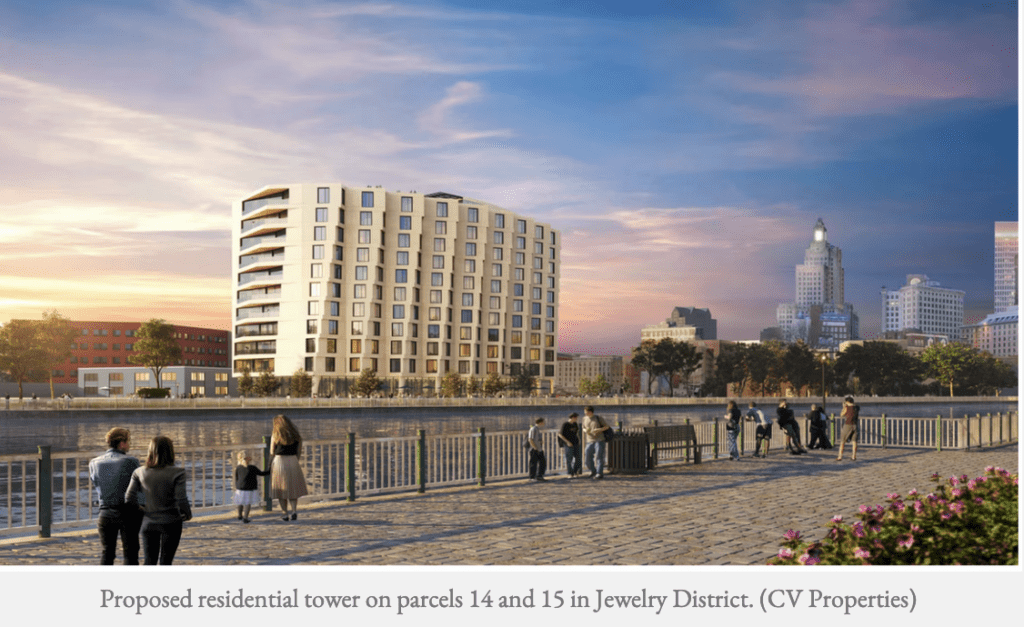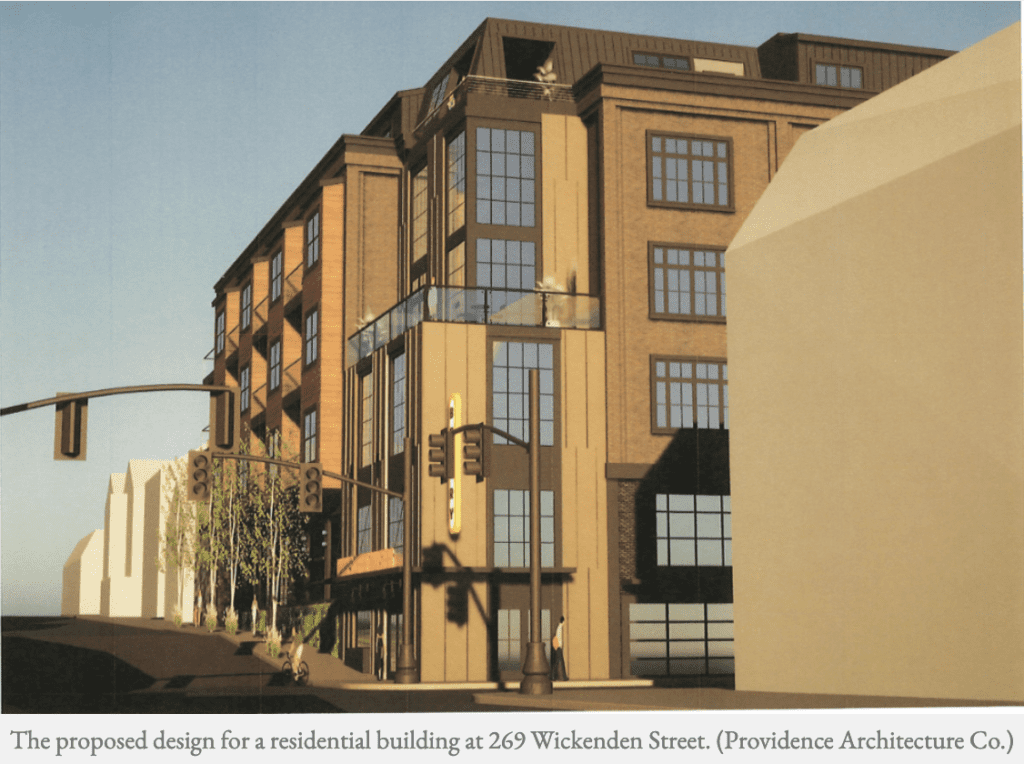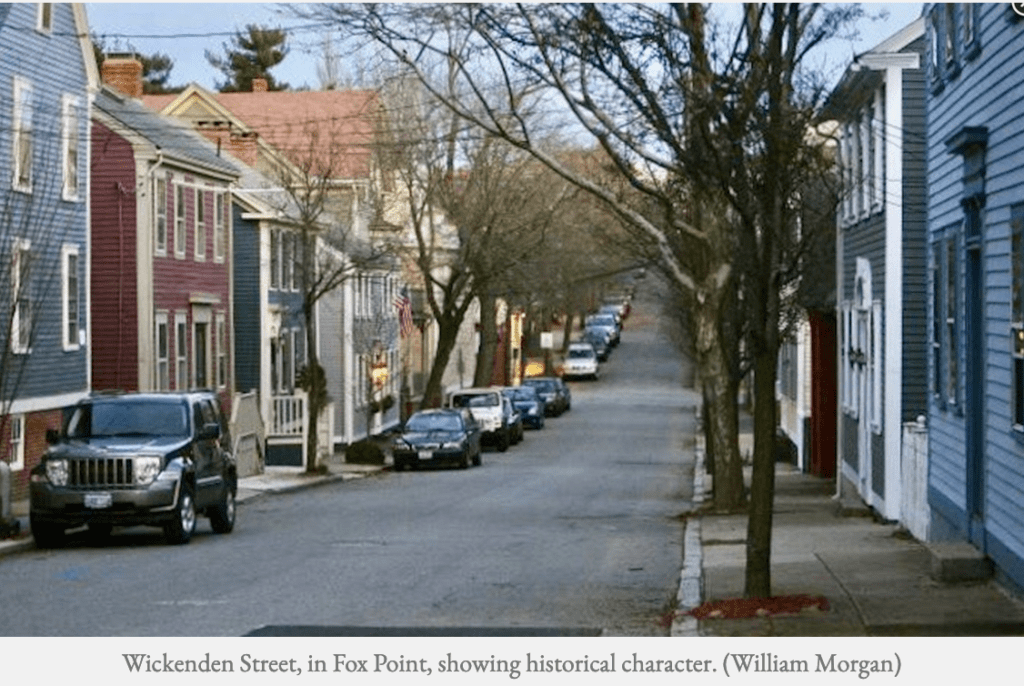Search Posts
Recent Posts
- ART! Annual Art in the Village pairs with new Dads, Grads and Art weekend at Mistic Village June 10, 2025
- Device developed in Rhode Island a breakthrough in pediatrics – the SMöLTAP® Positioner June 10, 2025
- Rhode Island Weather for June 10, 2025 – Jack Donnelly June 10, 2025
- Papitto scholarships and $1 Million investment in idea of Cranston’s Melissa Gonzalez Gutierrez June 10, 2025
- URI student-athletes, recent alumni start Summer Soccer Camp, NextPlay Training – John Cardullo June 10, 2025
Categories
Subscribe!
Thanks for subscribing! Please check your email for further instructions.

Providence: Move over, historic character – David Brussat
by David Brussat, Architecture Here and There, contributing writer
Parcel 2 proposal offered by Urbanica and approved by state office of preservation (!). (RISHPO)
New and dubious projects (the only kind permitted in Providence, it seems) have crossed my desk, perhaps belatedly. One is for an 11-story residential building in the Jewelry District, appalling in its design as is apparently now mandatory under official city and state design directives, and the other is for a five-story building on Wickenden Street, in Fox Point. News of the latter comes to me from Providence Monthly and William Morgan’s April column in GoLocalProvidence.
Also, courtesy of the Providence Preservation Society’s advocacy update, comes news of the latest version of the apartment complex slated for Parcel 2 (above), which obeys the city design mandate noted above. The City Plan Commission offers a lengthy description. The link includes dozens of images, and I’ve taken my best guess as to which offers the clearest idea of what is likely to be built. As you’ll see, it was not easy.
Here is the dubious proposal for Parcel 14, in the Jewelry District, or Innovation District, or whatever it is called these days:

The proposal for a five-story residential building (pictured just below) would be built on the south side of Wickenden and east of Brook Street. It would replace a bland building whose loss would be regrettable only to the extent that the proposed building ignores the character of Wickenden. It does, but possibly less so than recent additions to the street. Who knows what it will look like once what is approved becomes what is built? (This is called damnation by faint praise.)

Still no movement on the new version of the Duck & Bunny, whose owners promised to rebuild it after they tore it down on Easter weekend of 2021.
The photo below comes from Will Morgan’s excellent GoLocal review of the situation in Fox Point, and serves to remind people of what a typical Providence mixed commercial residential street looks like. To replicate this historical character should not be difficult. In the case of 269 Wickenden, there is plenty of room in the rear to build apartments to make up for what ought to be improper to build along Wickenden. But people have to know what historical character is, and whether they really want to preserve it.

Providence Monthly reflects the establishment view of the city, although publishers Barry Fain, Richard Fleischer and John Howell are unlikely to be pleased with that description. The articles in PM suggest that the adults have left the building, with only fashionistas to take their place. Many articles show little understanding of why Providence is a great city or the forces that place it at risk.
For example, in its “Hot Topics” section, after describing the 11-story building proposed for Parcel 14, plus other recent and planned projects, mostly appalling, in the Jewelry District, the neighborhood association note from the Jewelry District reads that “the future never looked brighter for the Jewelry District.” Plasticky generic architecture is the law of the land. Of course, the leaders and staff of every city and state body overseeing these developments are modernists (though, again, they’d be reluctant to admit it). Modernism may be fine in its place, but that place is not a city that thrives on its historical character. These “experts” are trained to hold historical character in contempt, and to see what most people love as a bulwark against what the experts consider “progress.” Every hearing before these bodies is an exercise in trying to appear friendly to historical character without revealing their true colors.
Another example from the same source – an organization I’d had high hopes for – the Mile of History Association, which supposedly protects Benefit Street (where I lived for 14 years in 1985-1999) from attacks against its voluminous historical character, reads: “MoHA is also pleased to report the restoration of the streetlights along Benefit Street is complete. The new lanterns look similar to the old ones, but cast brighter, whiter light … .” In short, this is not restoration but modernization, replacing the soft amber glow of the old lamps with a filament of white glare. All of Benefit Street will rue this attack on their neighborhood’s gentle ambiance.
In the same section, the headline for the note from the Fox Point Neighborhood Association reads: “Fox Point residents fight for their neighborhood character.” Here Providence Monthly takes a different tack in reporting on the proposed Wickenden Street building. The left hand doesn’t know what the right hand is doing: “This proposal could forever change the environment and sensibility of what it means to live in a small, historic community.”
But neighbors throughout Providence do not seem to know what that means. Opponents of projects, even including the mercifully defunct Fane tower, have voiced a willingness to put up with the sort of “generic” design that is eating away at the city’s character. Most opposition groups in Providence do not understand that preserving the historical character does not mean refusing to move into the future.
This false attitude is that of the staff of the City Plan Commission and other panels that neighborhood preservationists should be able to rely on. It is taught in architecture and planning schools throughout the country. And those whom elected officials appoint and hire for those commissions and agencies directly and actively oppose the sentiments of voters who put those elected officials into office.
Too bad this anti-preservationism is also taught, with occasional accidental ventures into sanity, to readers of Providence Monthly. Its publishers – especially Barry Fain, who was once the sole sane voice on the Capital Center Commission’s Design Review Committee – should know better.
___
To read other articles by David Brussat: https://rinewstoday.com/david-brussat-contributing-writer/

My freelance writing and editing on architecture and others addresses issues of design and culture locally and globally. I am a member of the board of the New England chapter of the Institute of Classical Architecture & Art, which bestowed an Arthur Ross Award on me in 2002. I work from Providence, R.I., where I live with my wife Victoria, my son Billy and our cat, Gato. If you would like to employ my writing and editing to improve your work, please email me at my consultancy, dbrussat@gmail.com, or call (401) 351-0451

You’re showing the wrong rendering of Parcel 2. The project now has a more contextual terra cotta facade and punched windows. Not only has SHPO approved it but so have multiple preservationists. The developer has bent over backwards to be thoughtful moves like bringing down the scale at Main Street and James Street to 3 stories. The building is shorter than many other buildings on Water Street including the historic Oakdale Manufacturing Building. The opposition to this building is totally misplaced and will no more of an effect on Benefit Street that the many other 5-6 story buildings on South Water Street. As far as Parcel 14, it’s a meh design but it’s certainly not bad (it’s at least sculptural), and the scale is fine for the Jewelry District.
Those of us who have lived in cities with more development know: none of these projects will hurt the character of Providence. What WILL hurt the character is not protecting its historic buildings. For a city with great history, we have measly historic protections. You and your peers should devote much more energy into protecting what we have, and less being afraid of modernism and moderate increases to building scale.